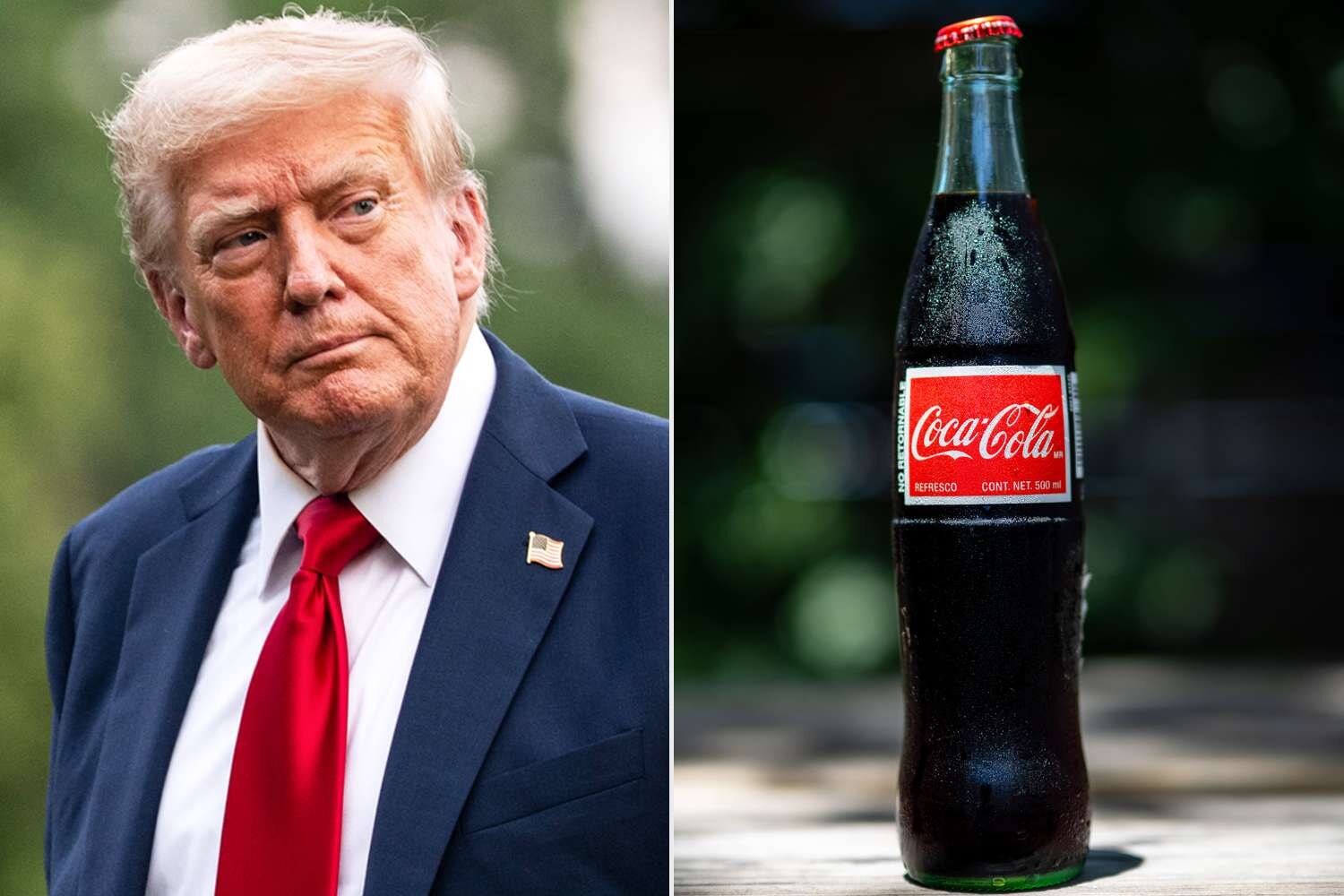
Coca-Cola Will Launch a Version of Coke With Cane Sugar in the U.S. This Fall
That's pretty good, right?
Published July 23, 2025
Advertisement
Advertisement
1. The Sweetener Shake-Up
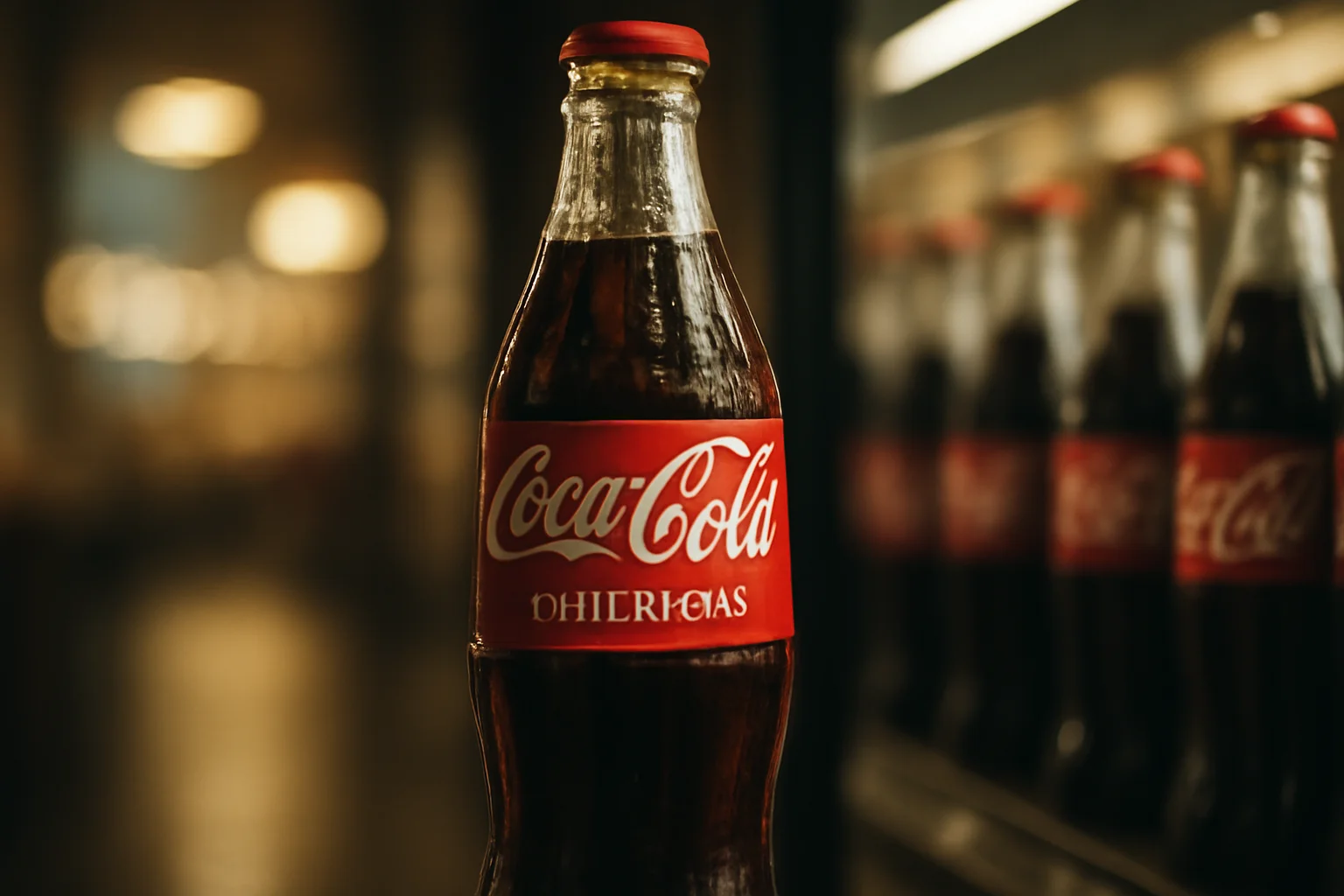
Coca-Cola is set to make waves in the U.S. beverage market this fall by introducing a version of its classic soda sweetened with American cane sugar, marking a significant shift in its product lineup. The company’s flagship U.S. cola has relied on high-fructose corn syrup since the 1980s, even as its counterparts in Mexico and Europe have continued to use cane sugar, fueling demand for the so-called “Mexican Coke” in the States. This move comes just days after President Donald Trump publicly claimed credit for persuading Coca-Cola to “use REAL Cane Sugar” in its drinks, a topic he amplified on social media. While the company initially withheld details, Tuesday’s announcement clarified that the new cane sugar cola will expand rather than replace its traditional U.S. offering. CEO James Quincey explained that this new product is meant to “complement the company’s strong core portfolio and offer more choices across occasions and preferences.” He emphasized Coca-Cola’s existing use of cane sugar in its U.S. teas, lemonades, and Vitaminwater, suggesting the shift is part of a broader strategy to meet evolving consumer demands. For decades, cane sugar has been a key selling point in international markets, making the new U.S. release a move to capture that premium cachet at home. Retailers like Costco and Target have already benefited from the popularity of imported Mexican Coke, often sold at a higher price due to tariffs and import costs. Now, Coca-Cola aims to capture that demand with a domestic product, manufactured using U.S. cane sugar from states like Texas, Florida, and Louisiana. The beverage giant’s decision reflects both market trends and political influence, illustrating how consumer preferences and presidential advocacy can converge. With rival PepsiCo also exploring cane sugar in its products, the American soda aisle is poised for a dramatic, sweetener-fueled transformation.
Advertisement
2. Political Pressure and Presidential Palate
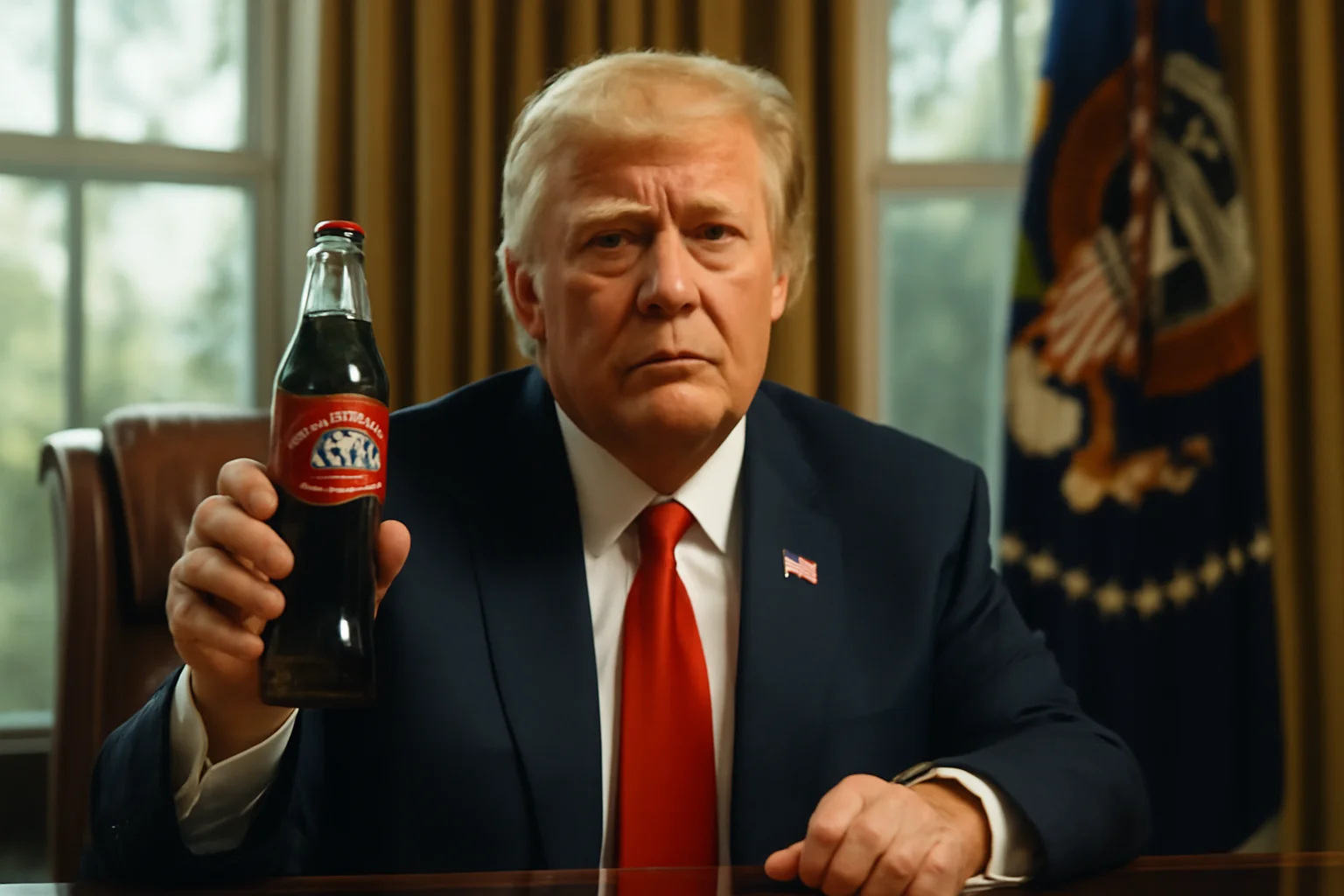
President Trump’s vocal enthusiasm for real cane sugar has played a central role in Coca-Cola’s recent announcement, amplifying the debate over sweeteners in American soft drinks. His recent post on Truth Social claimed direct involvement with the company, stating he had persuaded them to switch to “REAL Cane Sugar” in their U.S. sodas. Trump’s fondness for Diet Coke is well documented—he famously kept a button in the Oval Office to summon the drink—but his campaign for cane sugar signals a broader concern about food ingredients. This push dovetails with the Trump administration’s “Make America Healthy Again” initiative, which has sought to reduce artificial additives in American food and beverages. Health and Human Services Secretary Robert F. Kennedy Jr. has also criticized high-fructose corn syrup, labeling it as a contributor to obesity and chronic disease. Despite these political endorsements, research shows little nutritional difference between cane sugar and corn syrup, as both are about 50% glucose and 50% fructose. Still, the move has generated significant media attention, with the president’s comments setting the stage for Coca-Cola’s announcement. The company responded diplomatically, acknowledging Trump’s “enthusiasm” but emphasizing its own consumer-driven innovation agenda. As the new product launch approaches, both the White House and Coca-Cola appear eager to claim credit for delivering more “natural” options to American consumers. The political involvement has sparked conversations not only about health, but also about the influence of celebrity leaders on corporate decision-making. Ultimately, the roll-out of cane sugar Coke is as much about public relations and perception as it is about taste or health.
Advertisement
3. A Tale of Two Sweeteners
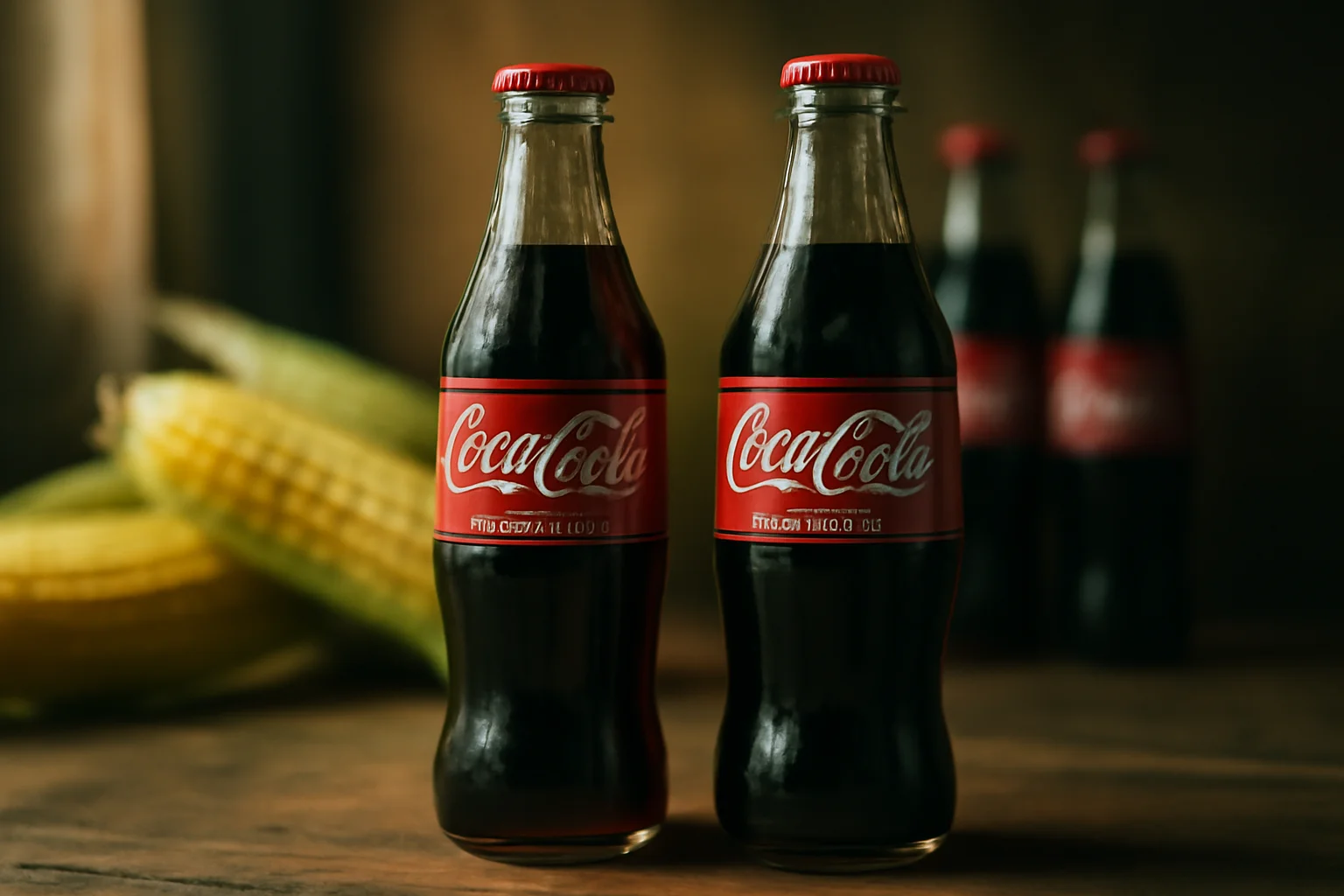
For decades, American soda has been defined by its use of high-fructose corn syrup, a cheaper alternative to cane sugar made possible by government subsidies and trade policies. When Coca-Cola switched to corn syrup in the 1980s, it was responding to economic incentives and a push for domestic production, even as other countries kept cane sugar as their sweetener of choice. This has fueled a thriving niche market for “Mexican Coke,” which many U.S. consumers seek out for its distinctive flavor and glass-bottle nostalgia. The growing demand for cane sugar sodas reflects shifting consumer attitudes toward food processing and ingredient transparency. Coca-Cola’s decision to add a U.S. cane sugar version marks a significant reversal, giving American drinkers a taste option once limited to imports and specialty retailers. Despite these changes, nutrition experts point out that cane sugar and corn syrup are nearly identical in terms of metabolic effects and calorie content. Dr. Dariush Mozaffarian, a leading nutritionist, emphasized that both sweeteners “can equally raise the risk for obesity, diabetes, high triglycerides and blood pressure.” Consumer advocacy groups have urged the government and companies to focus on reducing overall sugar content rather than simply swapping one sweetener for another. Nevertheless, for many Americans, the promise of “real sugar” taps into a powerful nostalgia and a desire for perceived authenticity. The rivalry between sweeteners is now as much about branding and psychology as about actual health benefits. Coca-Cola’s move could set a precedent for other major food and beverage manufacturers navigating the complex world of consumer expectations.
Advertisement
4. Rivalries
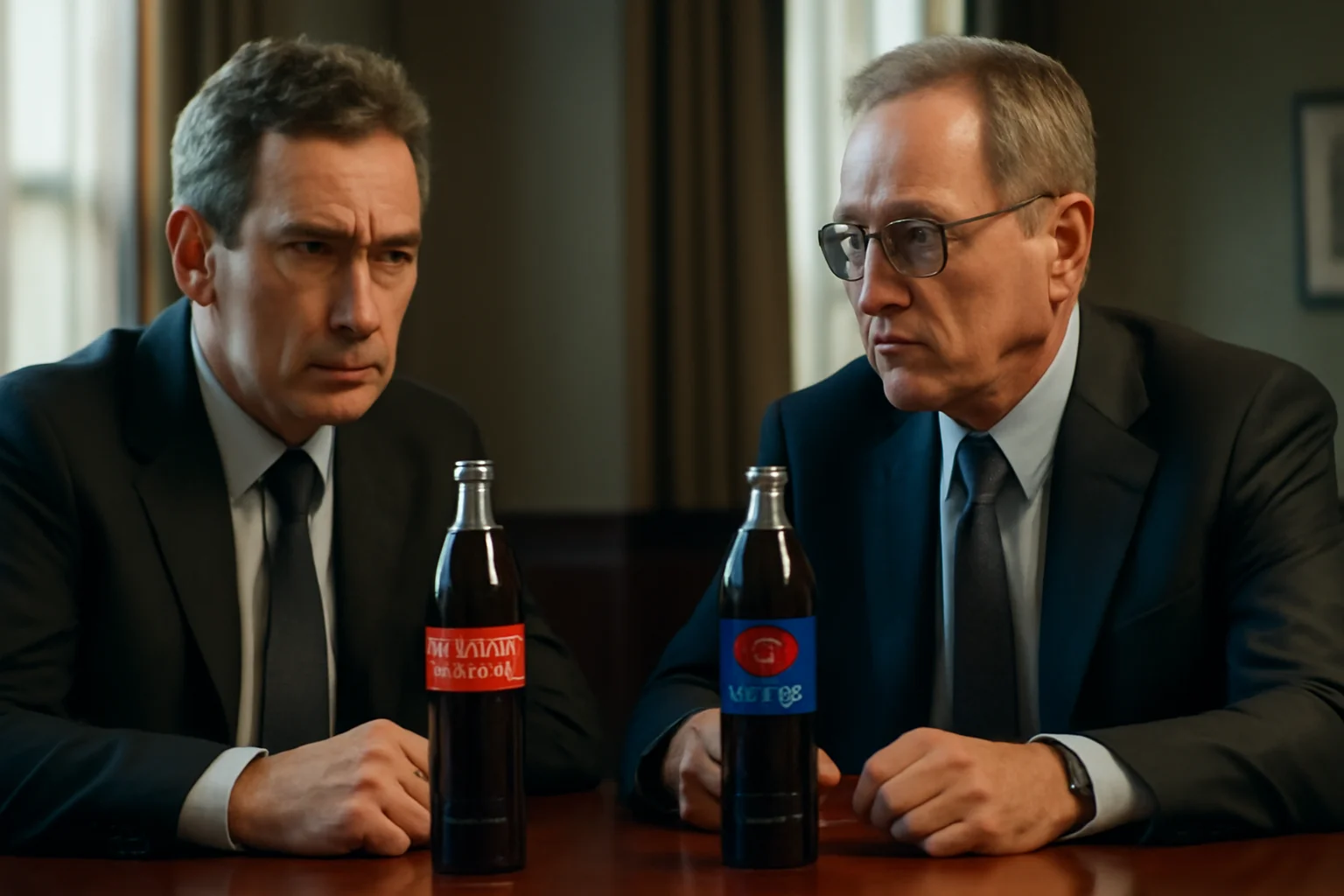
The introduction of a U.S. cane sugar Coke comes amid fierce competition in the soft drink industry, with rivals PepsiCo and Dr Pepper having already launched cane sugar versions of their flagship products. PepsiCo has taken a more experimental route, recently debuting a prebiotic soda containing cane sugar and additional fiber, hoping to capture health-conscious consumers. PepsiCo’s CEO Ramon Laguarta has even called for a national discussion on lowering the cost of sugar to support wider use across the industry. For Coca-Cola, the decision to add a cane sugar option represents both an answer to competitive pressures and an opportunity to further diversify its portfolio. James Quincey, Coca-Cola’s CEO, has framed the move as part of an “ongoing innovation agenda,” designed to reflect evolving consumer preferences and the demand for premium ingredients. Industry insiders note that the new offering will complement, not replace, existing corn syrup-sweetened Cokes, preserving the original recipe for those who prefer it. The Corn Refiners Association has voiced concerns that shifting away from high-fructose corn syrup could cost American jobs, lower farm income, and boost imports of foreign sugar. Domestic sugar production currently supplies only about 30% of U.S. demand, leaving the remainder to be filled by sugar beets and imports. Supply chain dynamics and government policy will continue to shape the debate, as companies weigh the costs and benefits of different sweetener sources. With sugar prices higher in the U.S. due to tariffs and quotas, the business case for cane sugar Coke may hinge on whether consumers are willing to pay a premium. The move is a bold experiment in balancing tradition, innovation, and the demands of a rapidly changing marketplace.
Advertisement
5. The Business Behind the Bubbles

Coca-Cola’s second-quarter financial results provide a revealing backdrop to the company’s new product launch. The Atlanta-based beverage giant reported $12.5 billion in revenue for the quarter, a 1% increase year-over-year that aligned with Wall Street’s expectations. Net income surged 58% to $3.8 billion, with the company citing strong performance from core products and successful marketing campaigns like “Share a Coke.” Even as global case volumes dipped 1%, higher pricing and resilient demand helped offset the weakness in overall unit sales. Coca-Cola Zero Sugar stood out as a bright spot, with case volumes rising 14% as consumers sought out lower-calorie options. The company remains optimistic, forecasting full-year earnings growth of 8%, despite trimming its outlook slightly earlier in the year. CEO James Quincey credited improved consumer sentiment in key markets such as China, Europe, Africa, and North America for the positive momentum. Still, headwinds persist, especially among lower-income consumers in the U.S., as well as in regions affected by monsoons and geopolitical conflict. In North America, the Hispanic market has been a particular focus, with the company addressing a temporary slump in sales caused by viral misinformation earlier in the year. By rolling out new products and engaging in targeted outreach, Coca-Cola aims to shore up its diverse customer base and weather the fluctuations of a dynamic global economy. Financial discipline, brand strength, and product innovation remain at the heart of the company’s strategy as it navigates both tradition and transformation.
Advertisement
6. The Science of Sweetness

Much of the debate over Coke’s new cane sugar formula centers on perceived health benefits, but the science tells a more nuanced story. High-fructose corn syrup and cane sugar are composed of roughly equal parts fructose and glucose, meaning their effects on metabolism and health are almost identical. Medical experts, including Dr. Dariush Mozaffarian, warn that both sweeteners contribute to obesity, diabetes, high blood pressure, and other chronic conditions when consumed in excess. While some studies suggest minor differences in how the body processes fructose and sucrose, most researchers agree the impact is negligible in practical terms. Advocacy groups, such as the Center for Science in the Public Interest, argue that the real issue is the amount of sugar in the American diet, not the source of the sweetener. Despite these warnings, consumer perceptions of “natural” cane sugar often drive demand for products that evoke nostalgia or the allure of less-processed ingredients. Marketing efforts play a powerful role in shaping these perceptions, encouraging shoppers to equate cane sugar with quality, even when health outcomes are largely unchanged. The shift also highlights a broader trend toward ingredient transparency, with consumers demanding to know more about what goes into their food and drinks. Coca-Cola and its competitors are responding to this desire for “clean label” products, balancing science with the need to appeal to evolving tastes. Ultimately, the science of sweetness remains a complex interplay of chemistry, psychology, and marketing strategy. The launch of cane sugar Coke is a reminder that, for many consumers, perception is as important as reality.
Advertisement
7. Tariffs, Trade, and the Sugar Supply
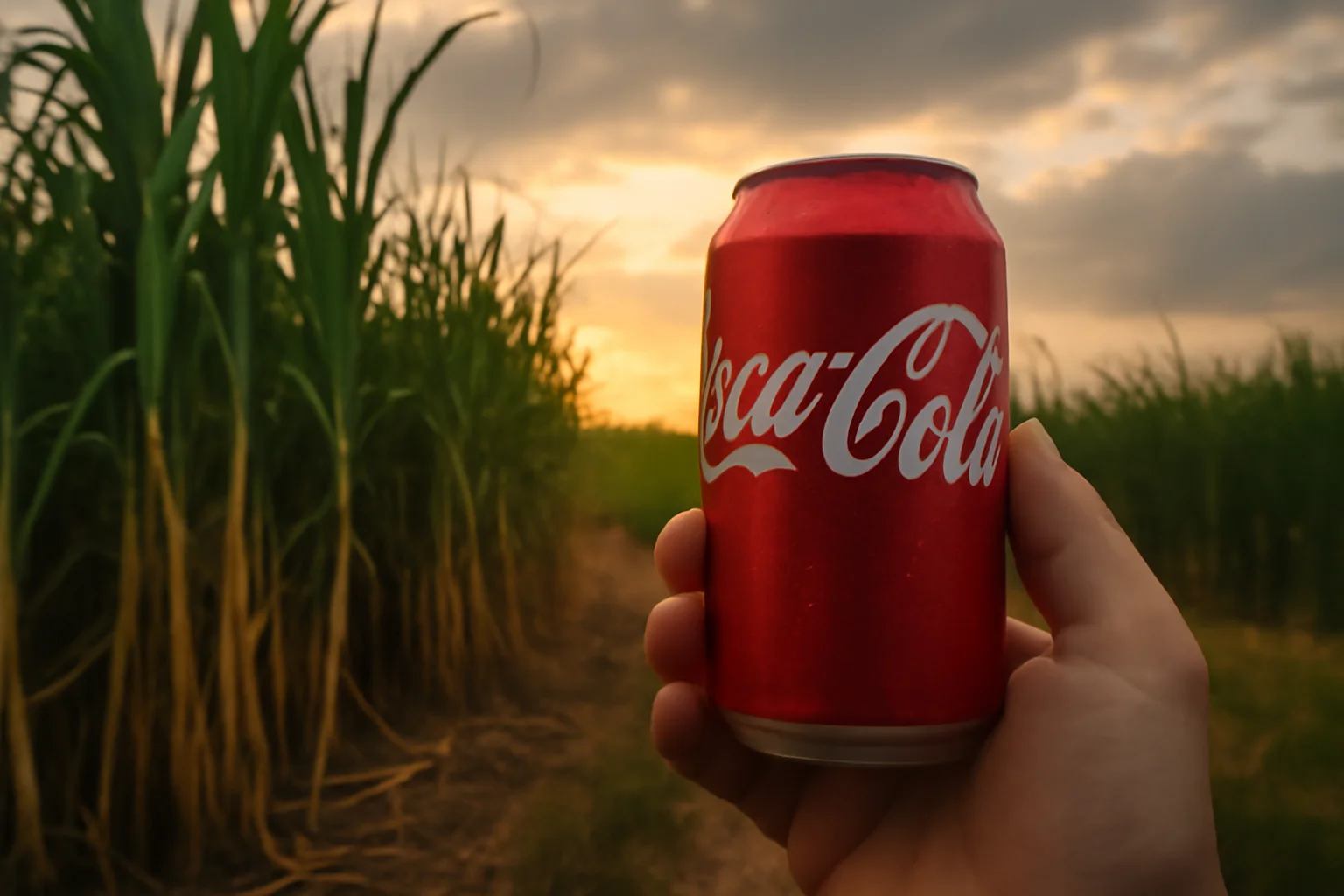
Behind every can of Coke lies a web of economic and political forces that shape the supply of sweeteners in the United States. Trade policies dating back decades have kept imported sugar expensive, supporting U.S. corn and beet growers while limiting the flow of cheaper cane sugar from abroad. Domestic cane sugar is produced mainly in Texas, Florida, and Louisiana, but accounts for less than a third of total U.S. consumption. To fill the gap, the U.S. relies on sugar beets grown in northern states and on imports, subject to strict quotas and tariffs. This complex supply chain has kept the price of sugar higher in the U.S. than in many other countries, incentivizing food and beverage manufacturers to use high-fructose corn syrup. The new cane sugar Coke will draw on domestic sources, but the economics of scaling up production could pose challenges if demand spikes. Industry groups warn that a large-scale shift could disrupt farm incomes, food manufacturing jobs, and broader agricultural markets. Despite these concerns, consumer interest in cane sugar sodas has proven durable, especially among shoppers who see them as a premium product. Coca-Cola’s move could pressure policymakers to revisit the balance of trade protections and agricultural subsidies that shape the sweetener market. The ongoing conversation between business, government, and consumers will determine how accessible—and affordable—cane sugar Coke becomes. In the end, every sip is a reminder that the soft drink aisle is as much a reflection of global economics as it is of American taste.
Advertisement
8. Marketing, Memories, and Mexican Coke
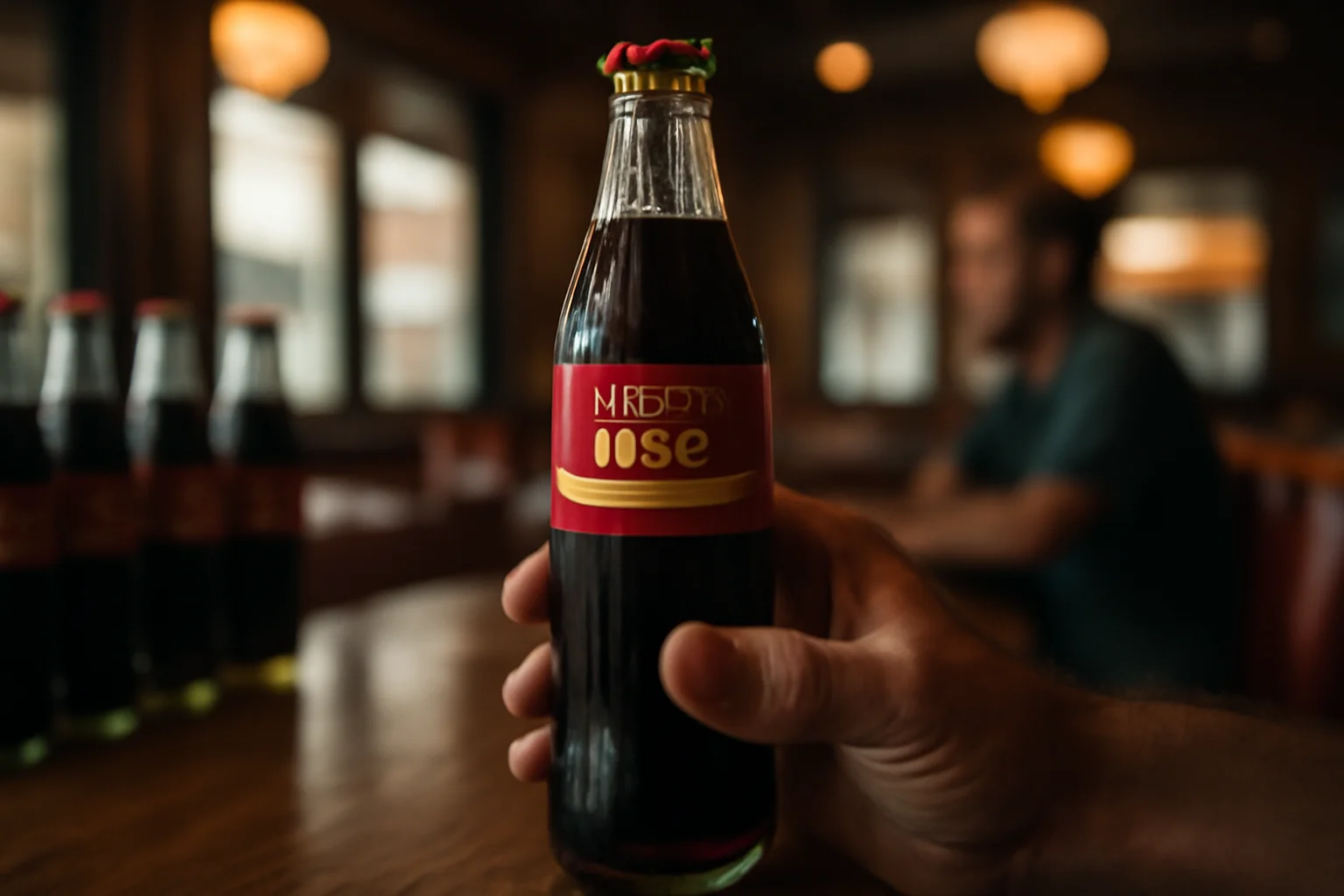
For many American soda fans, “Mexican Coke” has long held a special status, thanks to its glass bottles, distinctive taste, and use of real cane sugar. The beverage has become a symbol of authenticity and tradition, fueling a niche market among those seeking a throwback to Coke’s pre-1980s formula. Retailers and restaurants catering to Hispanic communities helped popularize Mexican Coke in the U.S., leading to its adoption by major chains like Costco and Target. The premium price attached to Mexican Coke hasn’t dampened demand, with consumers willing to pay extra for what they perceive as a superior product. Coca-Cola’s decision to introduce a domestically produced cane sugar variant aims to capture some of this nostalgia and address the evolving preferences of its U.S. customers. The move is also a response to increased competition from other brands emphasizing natural ingredients, glass packaging, and retro branding. Marketing campaigns are expected to lean heavily on the narrative of choice and authenticity, leveraging the emotional connections people have with their favorite drinks. The “Share a Coke” initiative, which puts names and messages on bottles, has already demonstrated the company’s knack for tapping into personal memories. The cane sugar Coke will build on this strategy, positioning itself as both a new innovation and a return to tradition. In the crowded soft drink market, the power of storytelling and brand loyalty remains a potent force for driving sales. Coca-Cola is betting that, for many Americans, the promise of real sugar will be too sweet to resist.
Advertisement
9. Health, Hype, and Consumer Choice
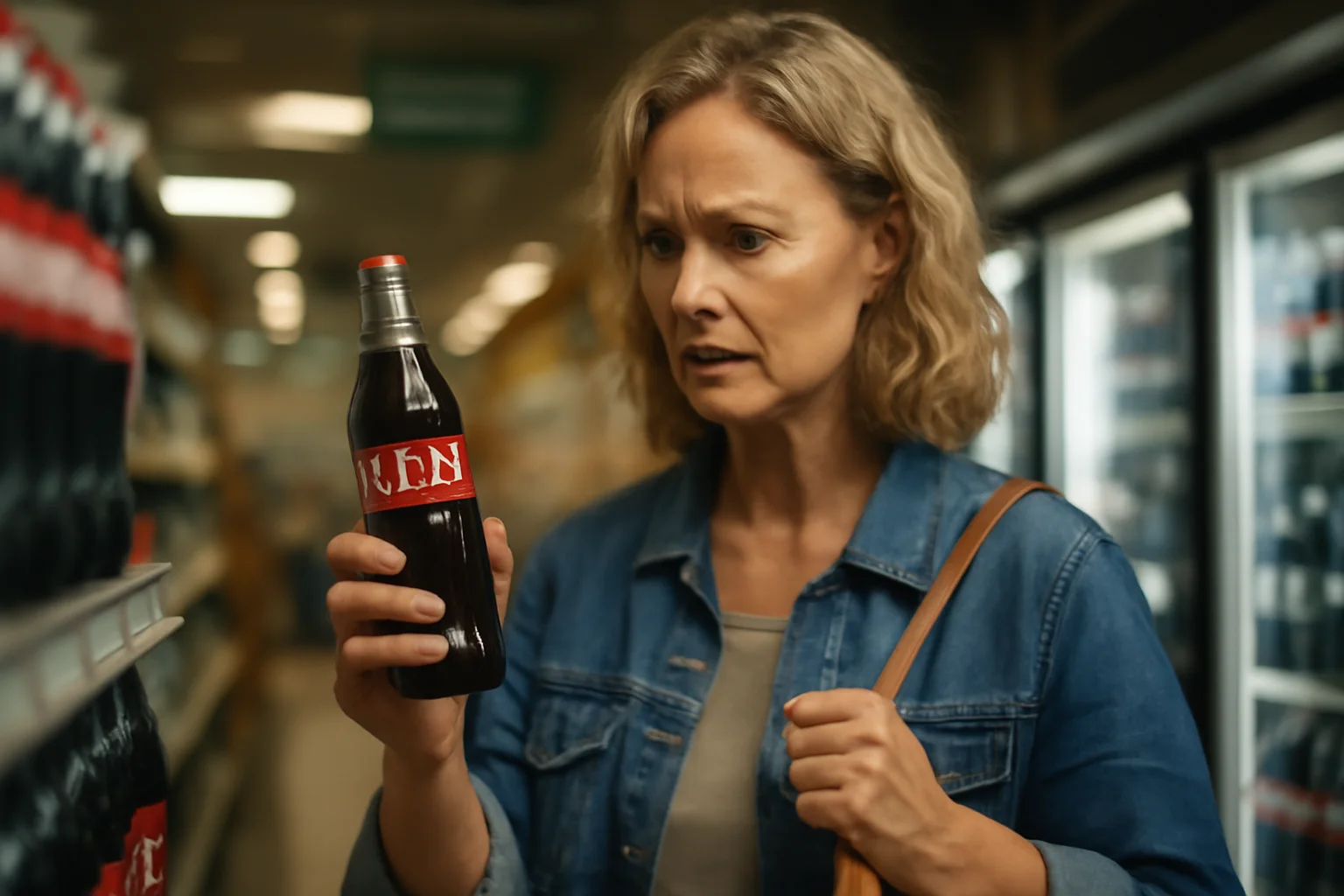
While much of the buzz around cane sugar Coke focuses on taste and tradition, the health debate remains front and center. Nutritionists and doctors caution that, regardless of sweetener, sugary sodas should be consumed in moderation due to their links to obesity, diabetes, and other health risks. Both cane sugar and high-fructose corn syrup provide the same number of calories, and their metabolic effects are largely indistinguishable for most people. Public health advocates have called on companies and governments to focus less on the source of sugar and more on reducing overall consumption. Coca-Cola’s new offering arrives at a time when consumers are increasingly interested in ingredient transparency and “natural” labels, even as scientific consensus emphasizes moderation over substitution. The soft drink industry has responded with a flood of low-sugar and zero-sugar alternatives, like Coca-Cola Zero Sugar, which continues to gain market share. Still, for those seeking a “classic” soda experience, the option of real cane sugar represents a powerful point of differentiation. Coca-Cola’s marketing efforts are expected to highlight the company’s responsiveness to consumer demand, emphasizing choice and customization. Ultimately, the health impact of cane sugar Coke will depend less on its ingredients than on how it fits into broader dietary patterns. For now, the launch is a testament to the enduring appeal of sweetness—and the complex relationship between food, culture, and wellness. As consumers navigate a dizzying array of beverage options, the promise of real sugar may offer both comfort and controversy.
Advertisement
10. The Future of Soda
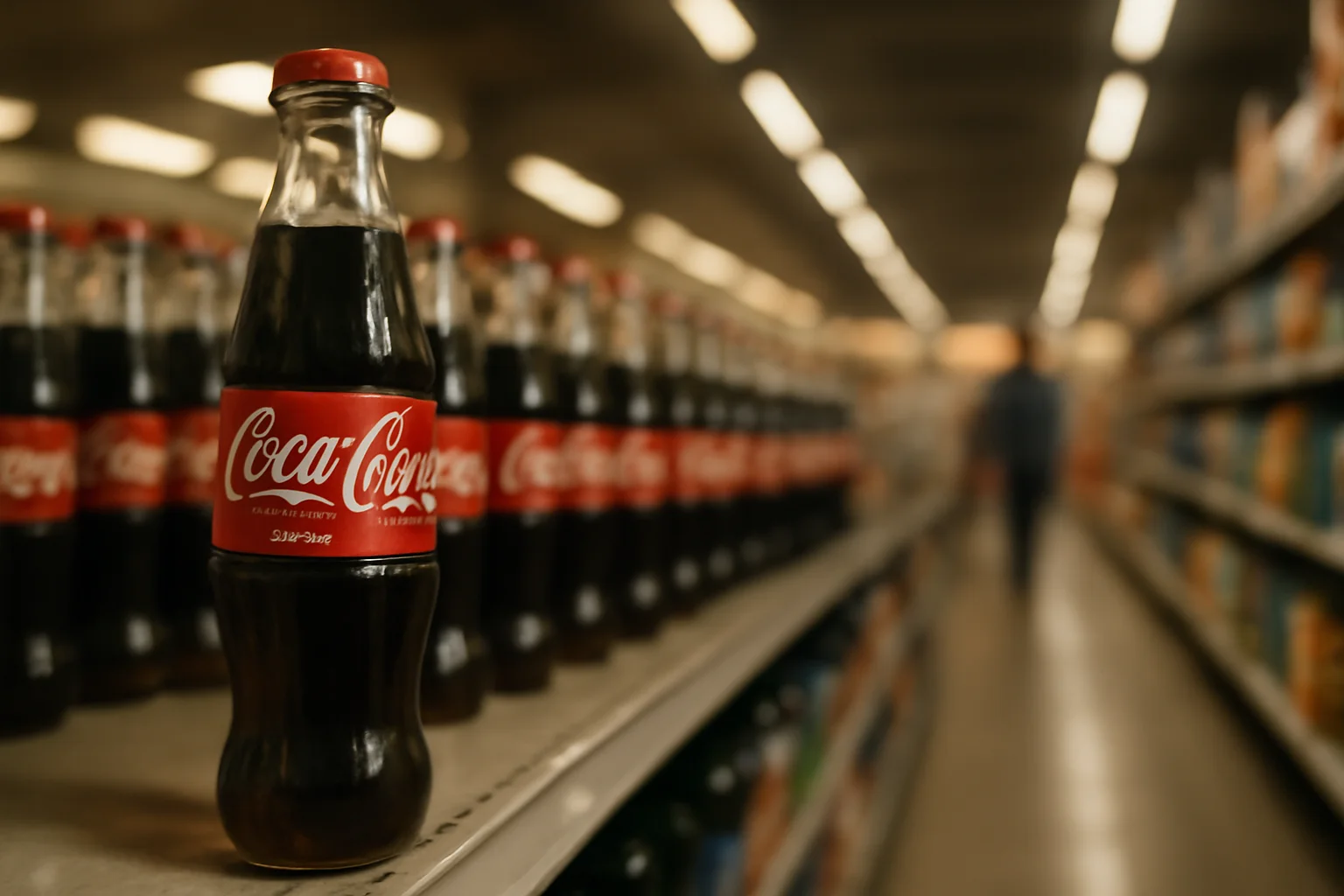
Coca-Cola’s cane sugar launch signals a new era in the American soft drink market, where consumer preferences, political influence, and industry innovation intersect. With rival companies experimenting with new ingredients, functional sodas, and health-forward branding, the pressure to adapt is greater than ever. Coca-Cola is positioning itself at the forefront of this change, using its massive scale and marketing muscle to deliver what it believes American consumers want. Whether the cane sugar variant becomes a permanent fixture or a passing trend remains to be seen, as both supply and demand will play decisive roles. Trade policies, production capacity, and cost pressures could all influence the future availability and price of cane sugar sodas. Meanwhile, ongoing health debates will continue to shape the conversation around sugar, calories, and the role of soft drinks in the modern diet. Coca-Cola’s willingness to innovate—even when it means revisiting its own past—underscores the brand’s resilience in an ever-changing marketplace. The rollout of cane sugar Coke is just one part of a broader movement toward more personalized, transparent, and nostalgic food and drink options. As American palates evolve, the success of this launch may serve as a bellwether for the future of the entire industry. For now, consumers can look forward to a new, sweeter chapter in the story of America’s most iconic soda. In the end, every bottle tells a tale—not just of taste, but of history, health, and the ongoing pursuit of the perfect sip.
Advertisement
Advertisement
You May Also Like






